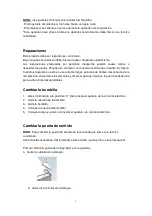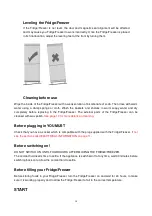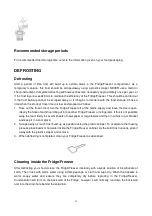
21
Recommended storage periods
For recommended food storage time, refer to the information given on your food packaging.
DEFROSTING
Defrosting
After a period of time frost will build up in certain areas in the Fridge/Freezer compartment. As a
temporary measure, this frost should be scraped away using a plastic scraper. NEVER use a metal or
sharp instrument. Complete defrosting will however become necessary approximately once per year, or
if the frost layer exceeds 5mm to maintain the efficiency of the Fridge/Freezer. This should be carried out
if the frost build-up cannot be scraped away, or if it begins to interfere with the food storage. Chose a
time when the stock of frozen food is low and proceed as follow:
1. Take out the frozen food, turn the Fridge/Freezer off at the mains supply and leave the doors open.
Ideally the frozen food should be put into another Fridge/Freezer or refrigerator. If this is not possible
wrap the food, firstly in several sheets of newspaper or large towels and then in a thick rug or blanket
and keep it in a cool place.
2. Scrape away as much frost build-up as possible using the plastic scraper. To accelerate the thawing
process place bowls of hot water inside the Fridge/Freezer cabinet. As the solid frost loosens, prize it
away with the plastic scraper and remove.
3. When defrosting is completed, clean your Fridge/Freezer as described.
Cleaning inside the Fridge/Freezer
After defrosting you should clean the Fridge/Freezer internally with a weak solution of bicarbonate of
soda. Then rinse with warm water using a damp sponge or cloth and wipe dry. Wash the baskets in
warm soapy water and ensure they are completely dry before replacing in the Fridge/Freezer.
Condensation will form on the back wall of the Fridge; however it will normally run down the back wall
and into the drain hole behind the salad bin.











































